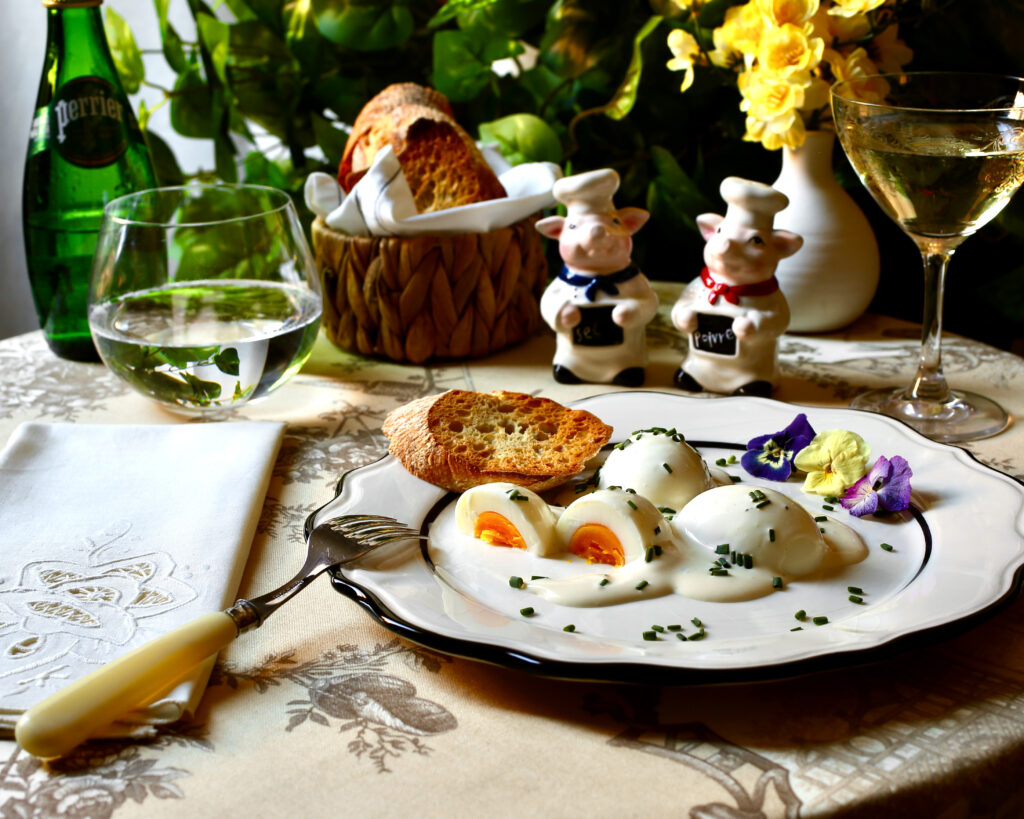
Classic Bistro Fare
🥚 Oeufs Mayonnaise 🥚
Oeufs Mayonnaise is appreciated for its simplicity and the rich creaminess of the eggs combined with the tanginess of the mayonnaise. It’s a staple in French cuisine and often served as an appetizer in bistros, cafes, and homes across France. It’s a dish that exemplifies the elegance of simplicity and the artistry of combining everyday ingredients in traditional French cooking.
In the late 1980s, Paris experienced a shift in culinary preferences, with traditional dishes like oeufs mayonnaise losing some of their allure. One factor that likely contributed to this decline in interest was growing concern about health issues, particularly the perceived risks associated with consuming foods high in cholesterol. Eggs, a key ingredient in oeufs mayonnaise, were often vilified due to their cholesterol content during this period.
Amidst this changing landscape, Claude Lebey, a prominent figure in the French culinary scene renowned for his restaurant guides, recognized the need to preserve and celebrate dishes like oeufs mayonnaise. In 1990, Lebey took action by establishing the “Association de sauvegarde de l’oeuf mayonnaise” also known as ASOM. This association was dedicated to championing the dish and ensuring its proper preparation in bistros and restaurants across Paris.
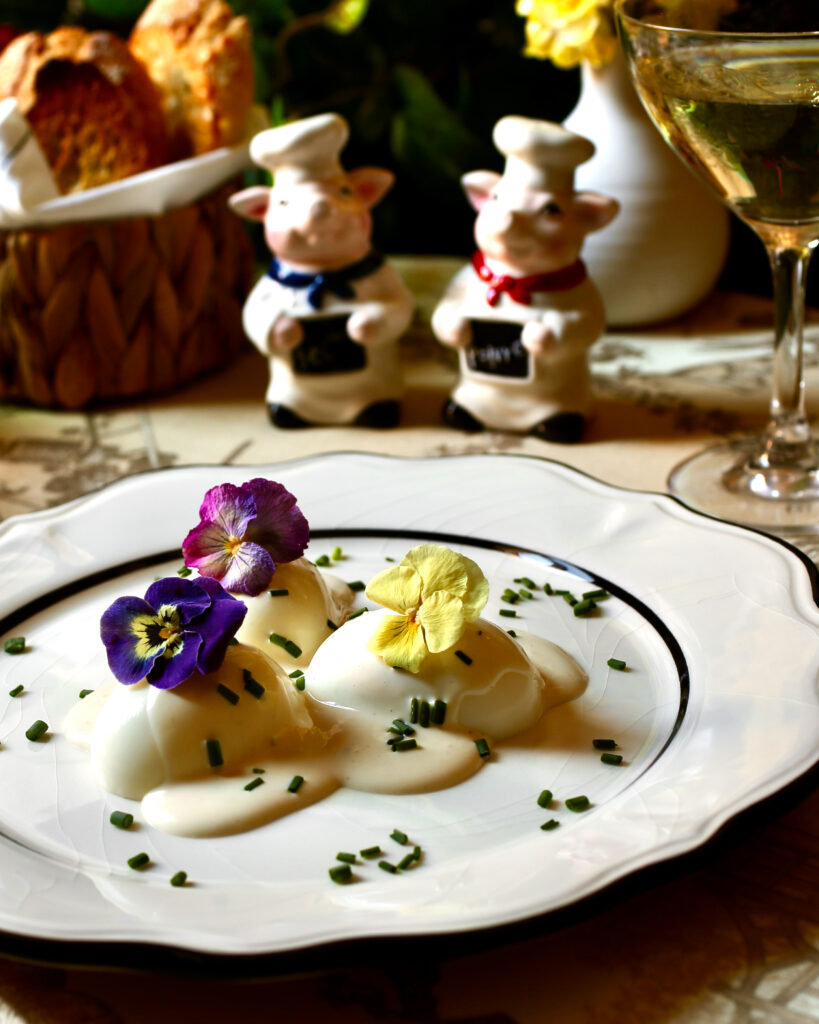
Lebey’s motivation stemmed from a concern that bistros, iconic establishments of French gastronomy cherished for their authentic charm and simple, hearty fare, were gradually losing their traditional character. He viewed oeuf mayonnaise as more than just a dish; it was a symbol of the essence of bistro cuisine—a humble yet delicious offering that epitomized the soul of French culinary heritage.
Lebey’s efforts, coupled with a broader movement towards rediscovering and celebrating traditional cuisine, ultimately contributed to a resurgence of interest in oeufs mayonnaise. The dish regained its place on bistro menus, reaffirming its status as a beloved staple of French gastronomy and a testament to the enduring appeal of simple, well-executed dishes that have stood the test of time.
Today, Claude Lebey’s grandson, Romain Lebey, has continued his family’s legacy by further promoting and preserving French culinary traditions, including the advocacy for dishes like oeufs mayonnaise.
Oeufs Mayonnaise Recipe
Make the Eggs
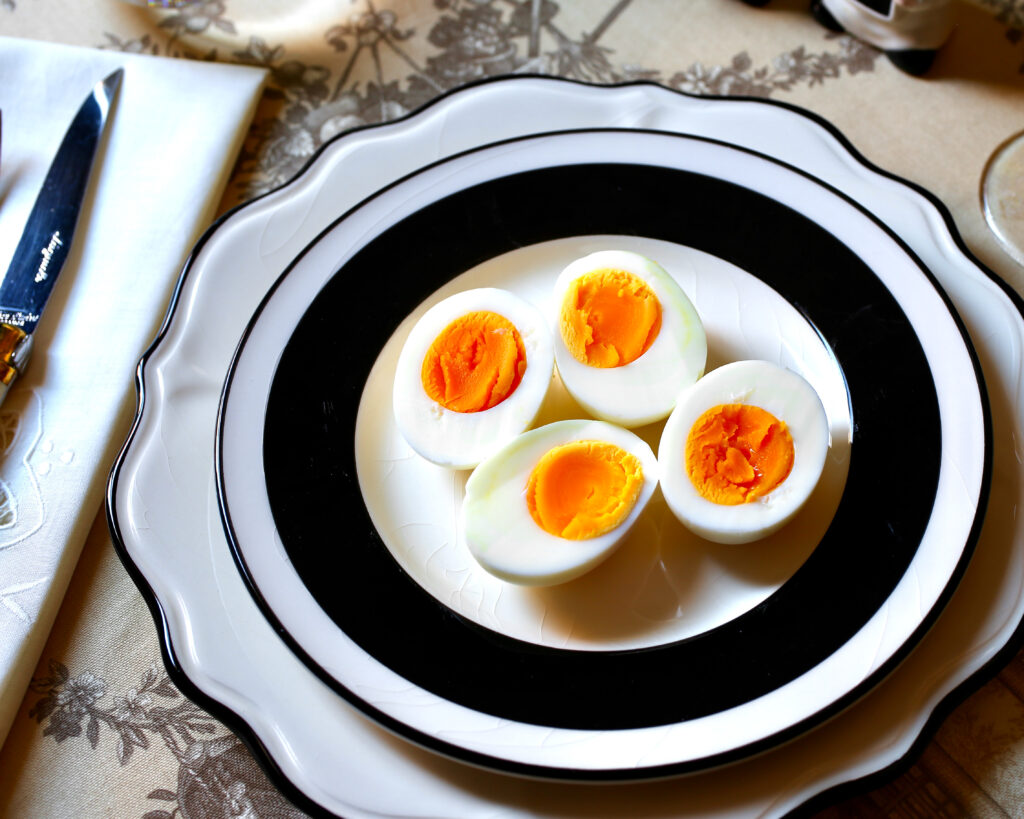 Place 4 to 6 eggs in a medium pot and cover with plenty cold water. Bring to a hard boil. Reduce heat to medium and continue to boil for 7 minutes. Remove the pot from the stove and dump out the hot water, then continue to run cold water over the eggs to stop the cooking.
Place 4 to 6 eggs in a medium pot and cover with plenty cold water. Bring to a hard boil. Reduce heat to medium and continue to boil for 7 minutes. Remove the pot from the stove and dump out the hot water, then continue to run cold water over the eggs to stop the cooking.
The quality of the eggs makes a difference. We did a side-by-side taste-test of plain eggs poached in the same pot of water. One egg was from a large national egg company often seen on television ads. The other egg from a pasture-raised hen tended by hand on a small family farm. Both eggs had similar sell-by dates.
The taste difference was striking. The pasture-raised eggs were rich and more luscious. The factory eggs tasted somewhat dull in comparison.
Make the Mayo
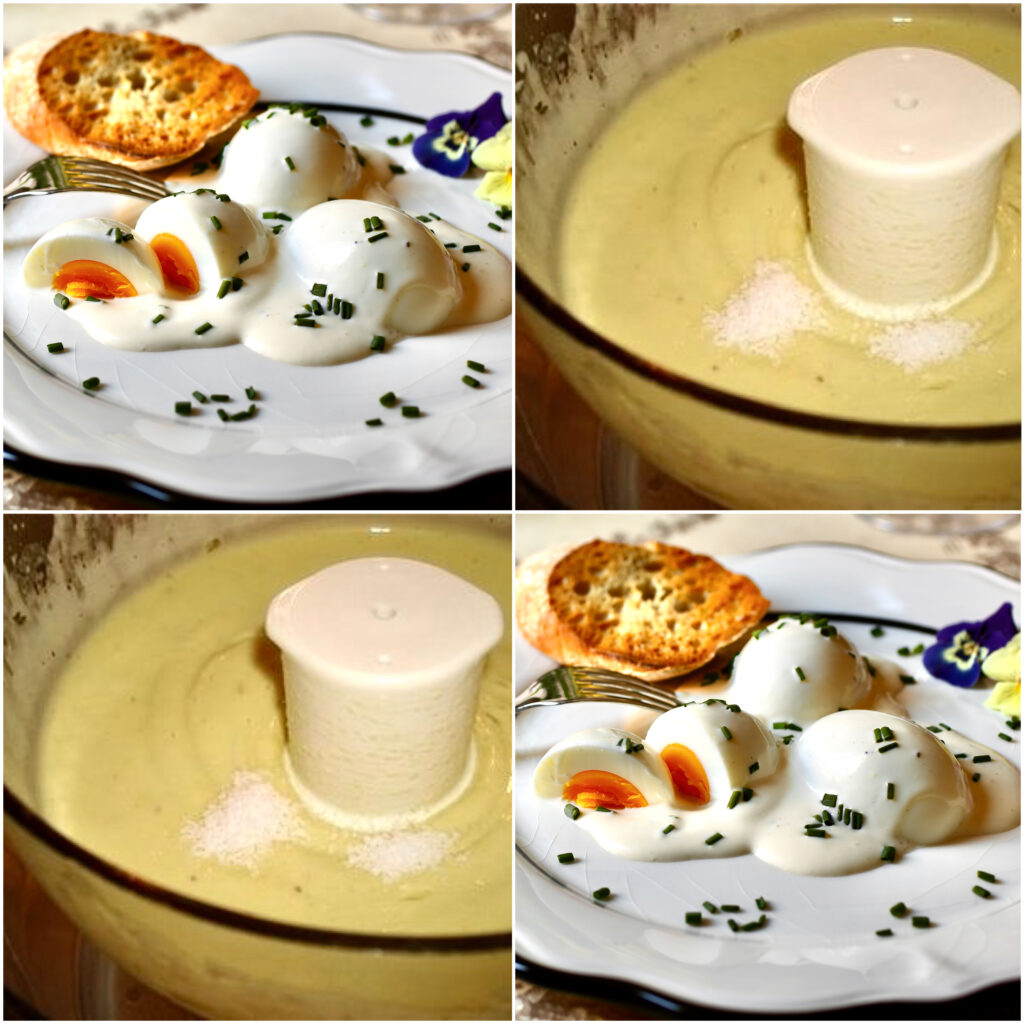
Option #1 Julia Child’s Mayonnaise in the Food Processor
- 2 egg yolks
- 1 whole egg
- 1 T. lemon juice, freshly squeezed, plus more if needed
- 1 t. Dijon-style prepared mustard
- 1/2 t. salt
- big pinch freshly ground white pepper
- up to 2 cups pure olive oil
Put the egg yolks, egg, lemon juice, mustard, salt, and white pepper in the work bowl of the food processor; process for 10 seconds or more, until creamy.
With the food processor running continuously, pour in the oil very slowly in driblets at first, to start the emulsion process.
When the sauce has definitely thickened, you may add the oil in a thin stream. Do not stop the machine at this point, but cease pouring every few seconds to be sure the oil is being absorbed. Then continue until the remaining 1 1/2 cups of oil are incorporated. Stop the machine and check the mayonnaise for taste and consistency. Adjust the seasonings.
Note: Julia’s mayonnaise will be yellow in color due to the egg yolks. Also her recipe will make a thicker consistency than is needed for oeufs mayo, so either use a bit less olive oil, or add more lemon juice at the end to thin. Julia’s method makes a larger quantity than the mayonnaise below, save some for other recipes! (More Julia recipes here).
Option #2 Mayonnaise with No Raw Egg
- 1/2 c. high-quality commercial mayonnaise (made with pasteurized eggs)
- 2 t. dijon mustard
- 2 t. lemon juice
- 2 t. rice wine vinegar (not seasoned)
- sea salt and fresh ground white pepper to taste
Whisk all ingredients together until completely smooth.
Note: Recipe can be doubled.
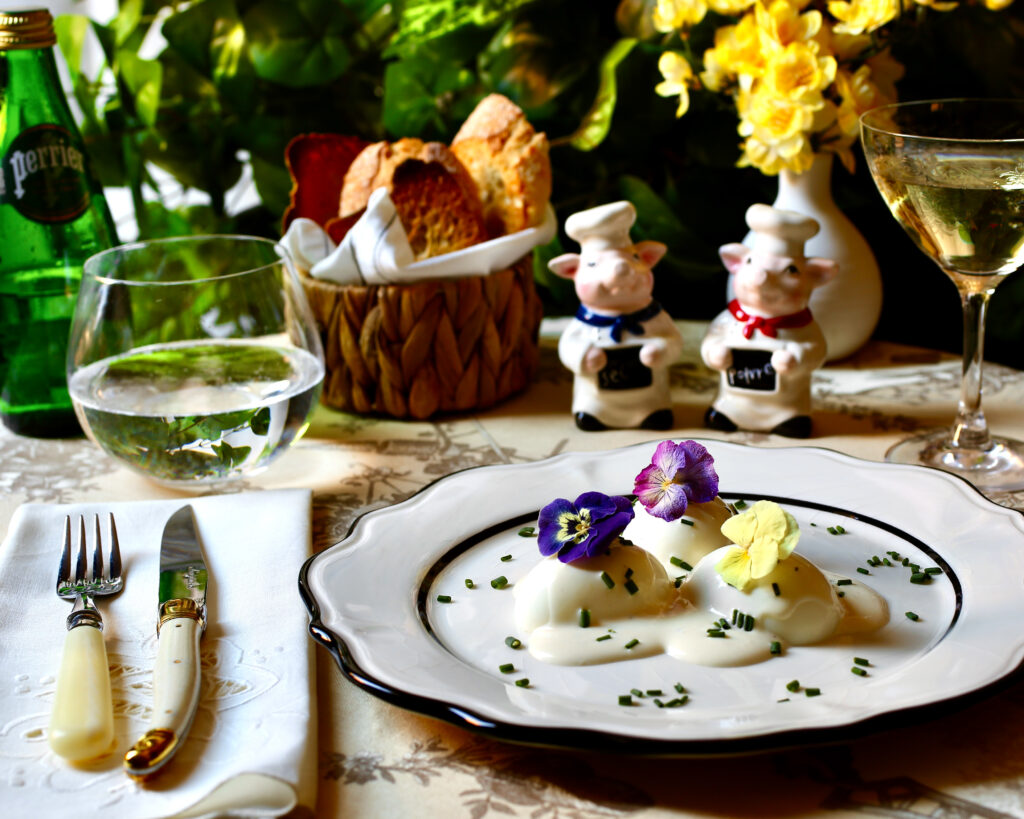 To Plate
To Plate
- cooked eggs, peeled
- mayonnaise
- chives, chopped
- edible flowers
- toasted baguette
Slice the eggs in half lengthwise. Place three halved eggs on a plate, cut-side down, with the tips touching. Spoon mayonnaise over the eggs. Garnish with chives and edible flowers. Serve with toasted baguette.
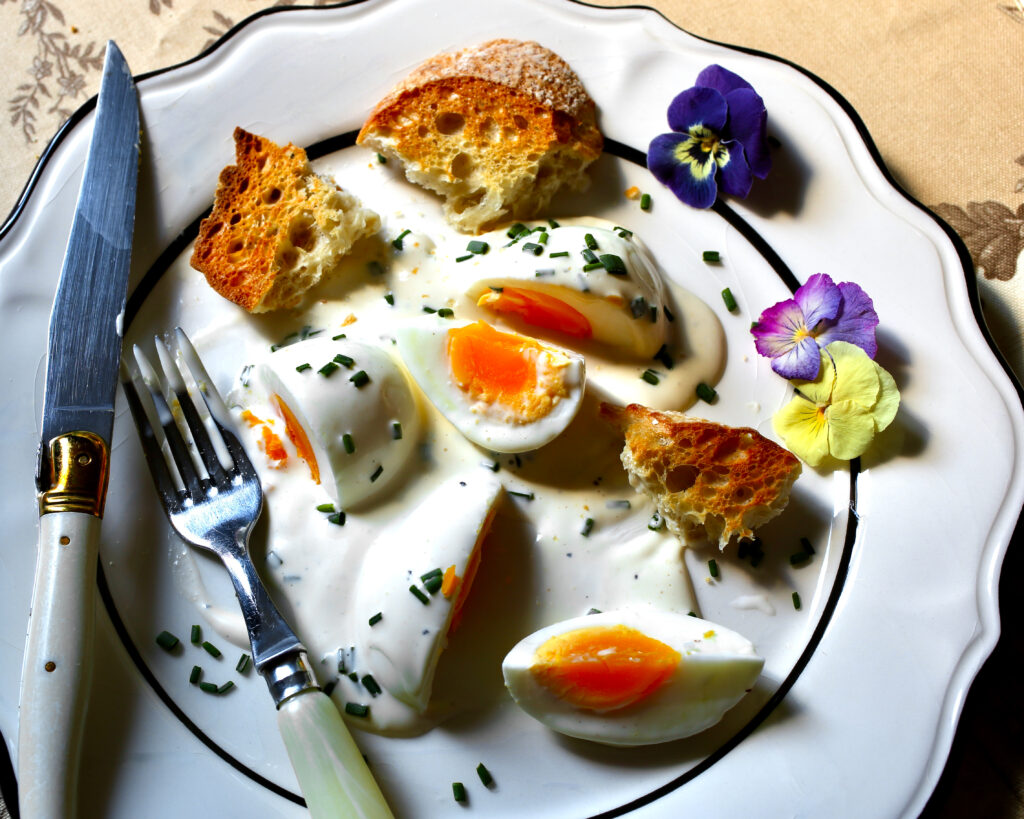

Love the idea of elevating eggs! One of the most versatile and nutritional foods. I am putting this on my to do list!